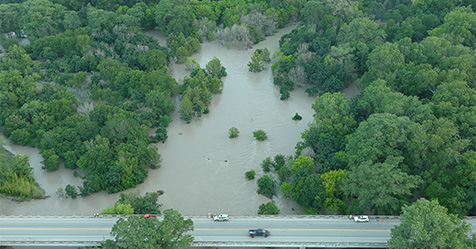How Natural Disasters Affect Health Care Facilities During a Pandemic
Wildfires and hurricanes added challenges to facility managers working to contain COVID-19
Health care facilities around the world are faced with adapting to the new challenge of emergency preparedness for the coronavirus pandemic. But what about when there is an added layer to the challenge like a natural disaster? Leaders at medical centers in the Pacific Northwest had to also prepare for wildfires and Gulf Coast for hurricanes this August and September. Leaders say previous crises and COVID-19 emergency preparedness helped them manage, according to the Association of American Medical Colleges (AAMC).
Wildfires
In August and September, wildfires spread across the Pacific Northwest affecting Washington state, Oregon and California—coating the region in a cloud of toxic smoke and forcing thousands to evacuate, Healthcare Facilities Today reports. In Washington and Oregon, the pandemic response helped them prepare for the fires. The Harborview Medical Center in Seattle was able to evacuate patients through their statewide coordination center for COVID-19. The University of Washington was in communications with hospitals throughout Washington state, Oregon and Alaska coordinating a plan to help if needed. The Oregon Health & Science University in Portland, the state’s only academic medical center and the designated regional hospital in emergencies, reduced the number of surgeries to preserve hospital capacity and monitored the air quality in the hospital to ensure the layers of filtration were working, according to AAMC.
Hurricanes
The last week of September, nearly two dozen named storms hit parts of the Gulf Coast. There were floods and wind damage that destroyed homes and left many without power. Health system administrators in the coast of Alabama have been through hurricanes before like Katrina. Therefore, in mid-September they prepared for Hurricane Sally. Administrators at USA Health at the University of South Alabama in Mobile ordered extra personal protective equipment (PPE), boarded up hospitals, and moved all intensive care unit patients to an alternative site.
The difference this season compared to previous storm responses was COVID-19. Facility managers had to maintain appropriate social distancing, block off extra space as sleeping areas for staff, and had to close outdoor COVID-19 testing sites because of dangerous conditions.
AAMC reports that the wildfires and hurricanes have a long-term impact on the pandemic as there might be a surge of COVID-19 this fall and spring since evacuees were in crowded shelters or grocery stores where social distance was hard to maintain.


